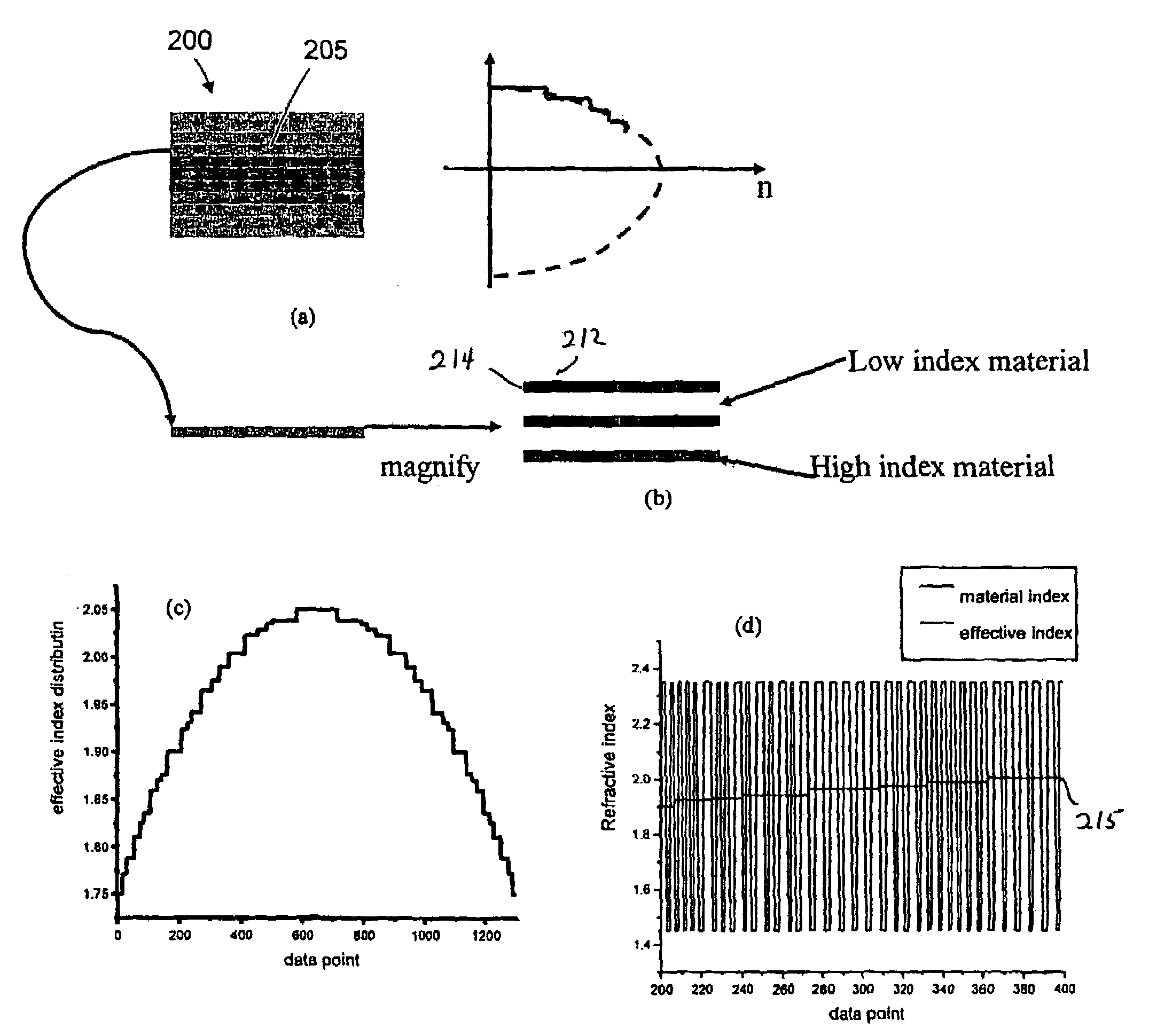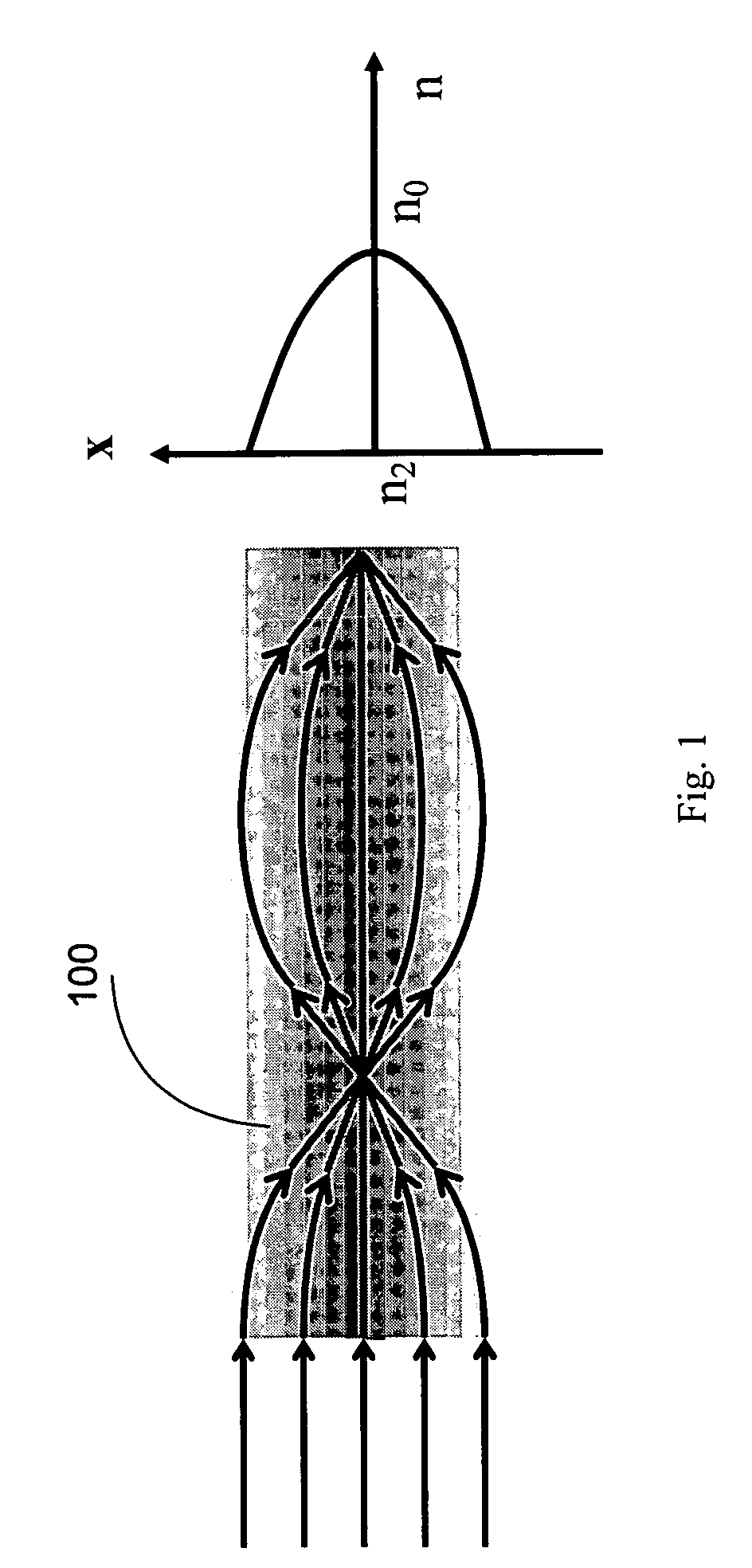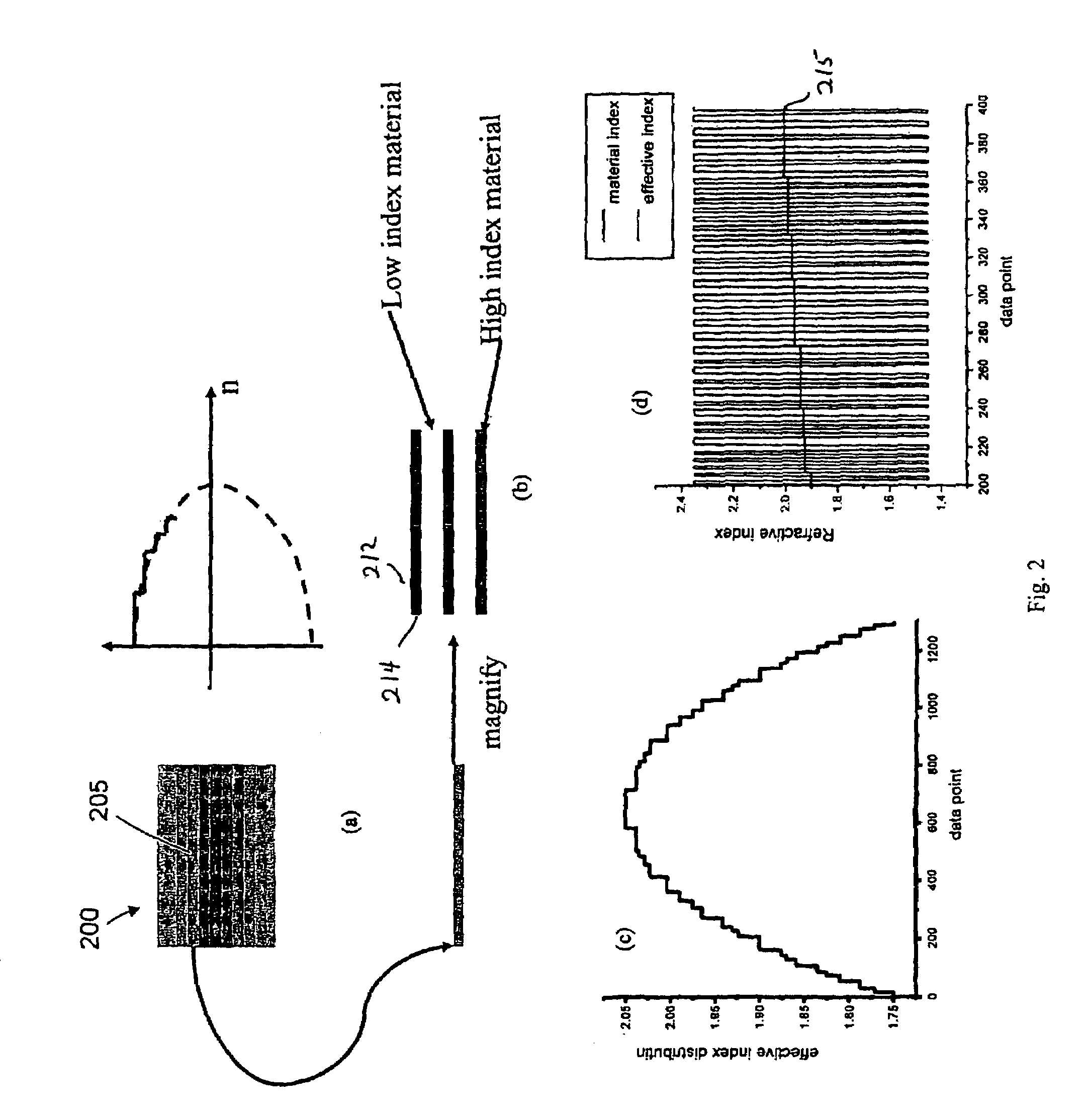Varying refractive index optical medium using at least two materials with thicknesses less than a wavelength
a technology of optical medium and refractive index, which is applied in the field of optical medium, can solve the problems of low light focusing power of the lens, strong absorption of light in the standard communication wavelength band, and limited application of methods, and achieve the effect of different refractive indices and high maximum refractive index changes
- Summary
- Abstract
- Description
- Claims
- Application Information
AI Technical Summary
Benefits of technology
Problems solved by technology
Method used
Image
Examples
Embodiment Construction
[0032]As is generally known, light is an electromagnetic wave oscillating at high frequency. All portions of the electromagnetic spectrum are meant to be included, including but not limited to, radiowaves, microwaves, millimeter waves, infrared radiation, visible light, and ultraviolet radiation. When light travels through a dielectric medium (e.g., glass), its speed (v) is reduced relative to the speed of light in vacuum (c). The refractive index (n) of the medium is defined as n=c / v. The frequency of the light is unchanged, and the wavelength is reduced from λo in vacuum to λeff=λo / n in the medium.
[0033]As shown in FIG. 1, in a graded refractive index (“GRIN”) optical medium 100, the material has a refractive index n(r) that decreases substantially continuously from a value of no at the central axis (r=0) to a value of nb at the outside border (r=a). In this example, n(r) has a parabolic refractive index distribution given by the formula:
[0034]n(r)=no[1-Δ(ra)2],whereΔ=n0-nbn0...
PUM
 Login to View More
Login to View More Abstract
Description
Claims
Application Information
 Login to View More
Login to View More - R&D
- Intellectual Property
- Life Sciences
- Materials
- Tech Scout
- Unparalleled Data Quality
- Higher Quality Content
- 60% Fewer Hallucinations
Browse by: Latest US Patents, China's latest patents, Technical Efficacy Thesaurus, Application Domain, Technology Topic, Popular Technical Reports.
© 2025 PatSnap. All rights reserved.Legal|Privacy policy|Modern Slavery Act Transparency Statement|Sitemap|About US| Contact US: help@patsnap.com



